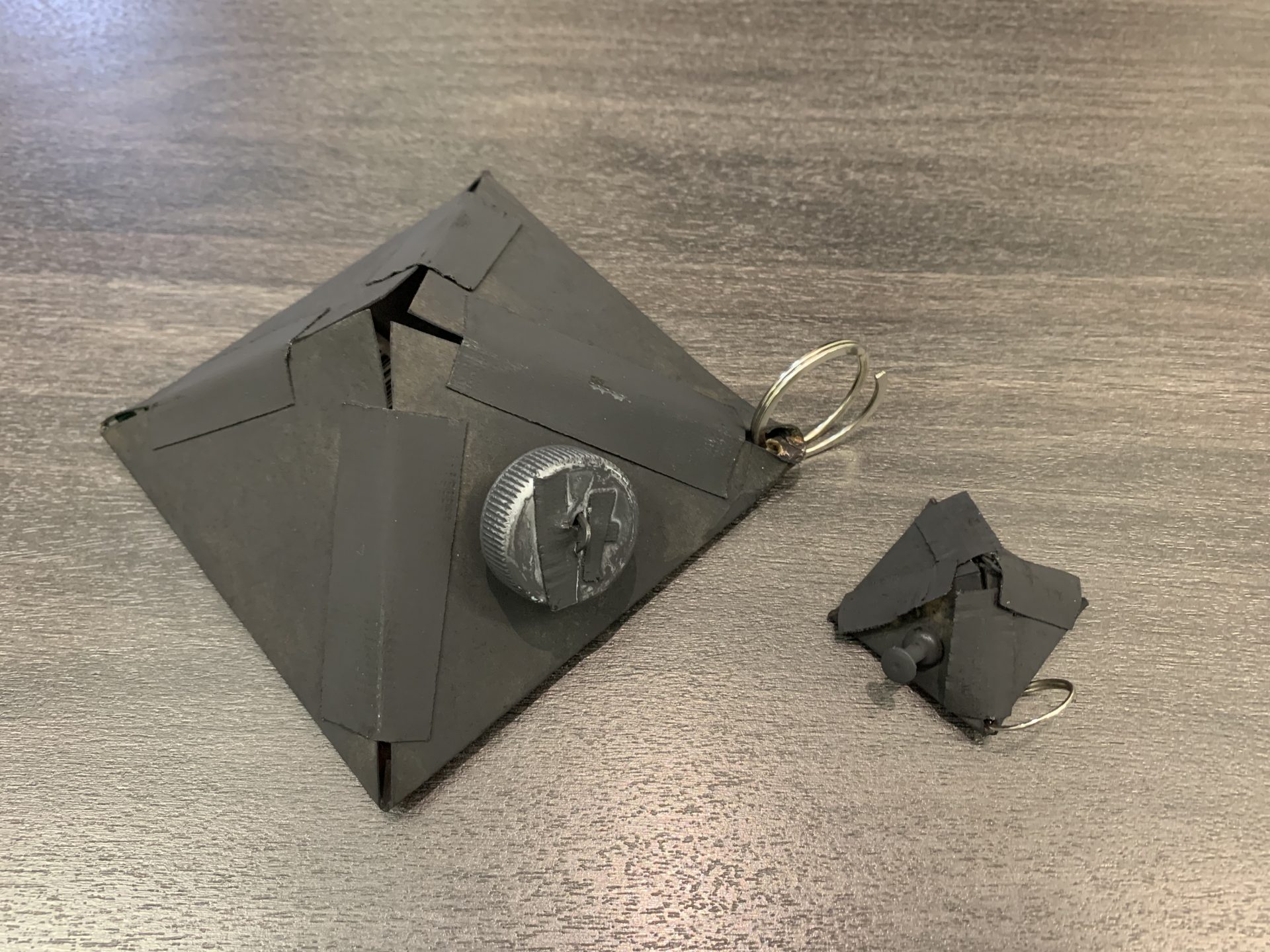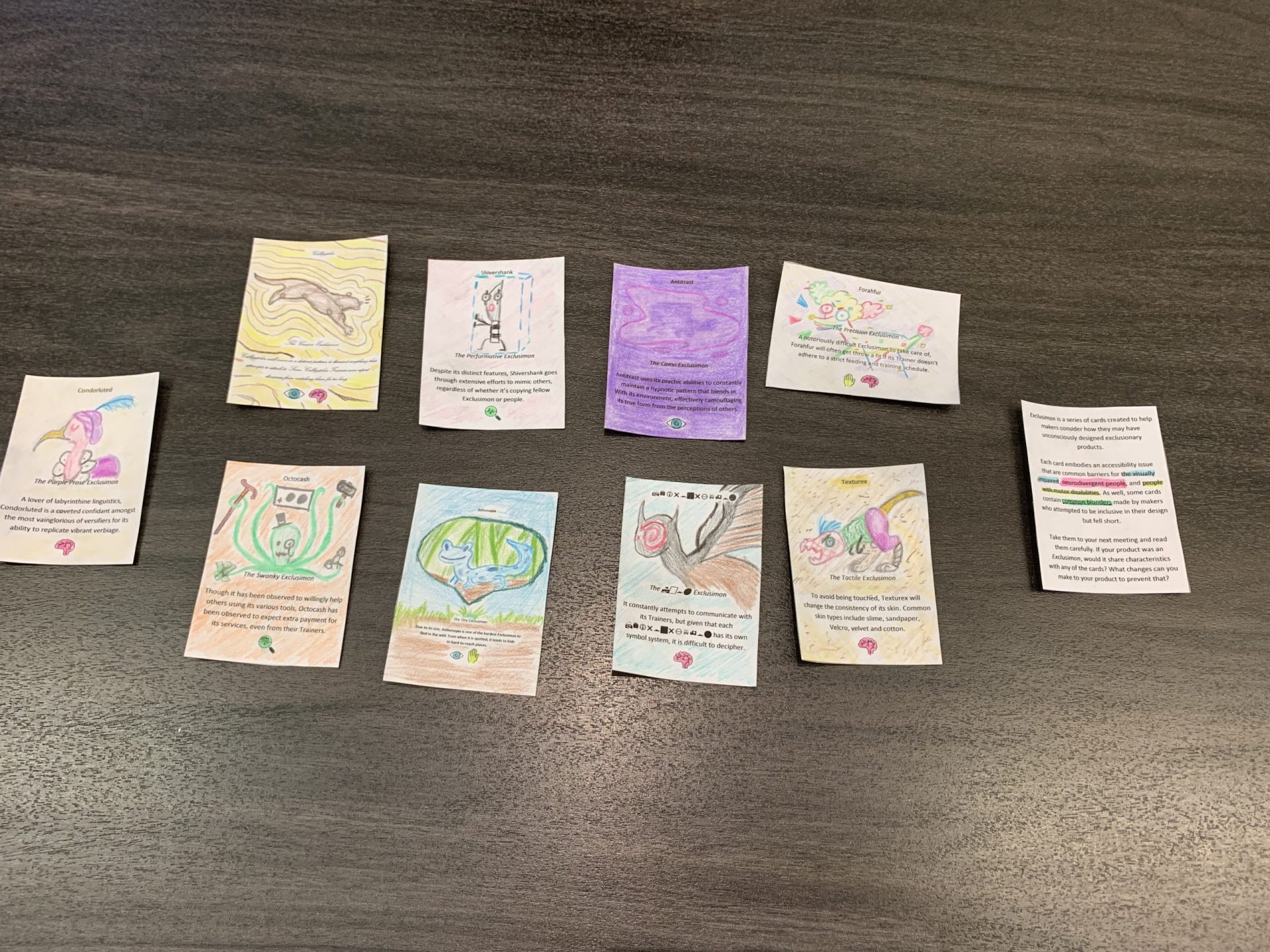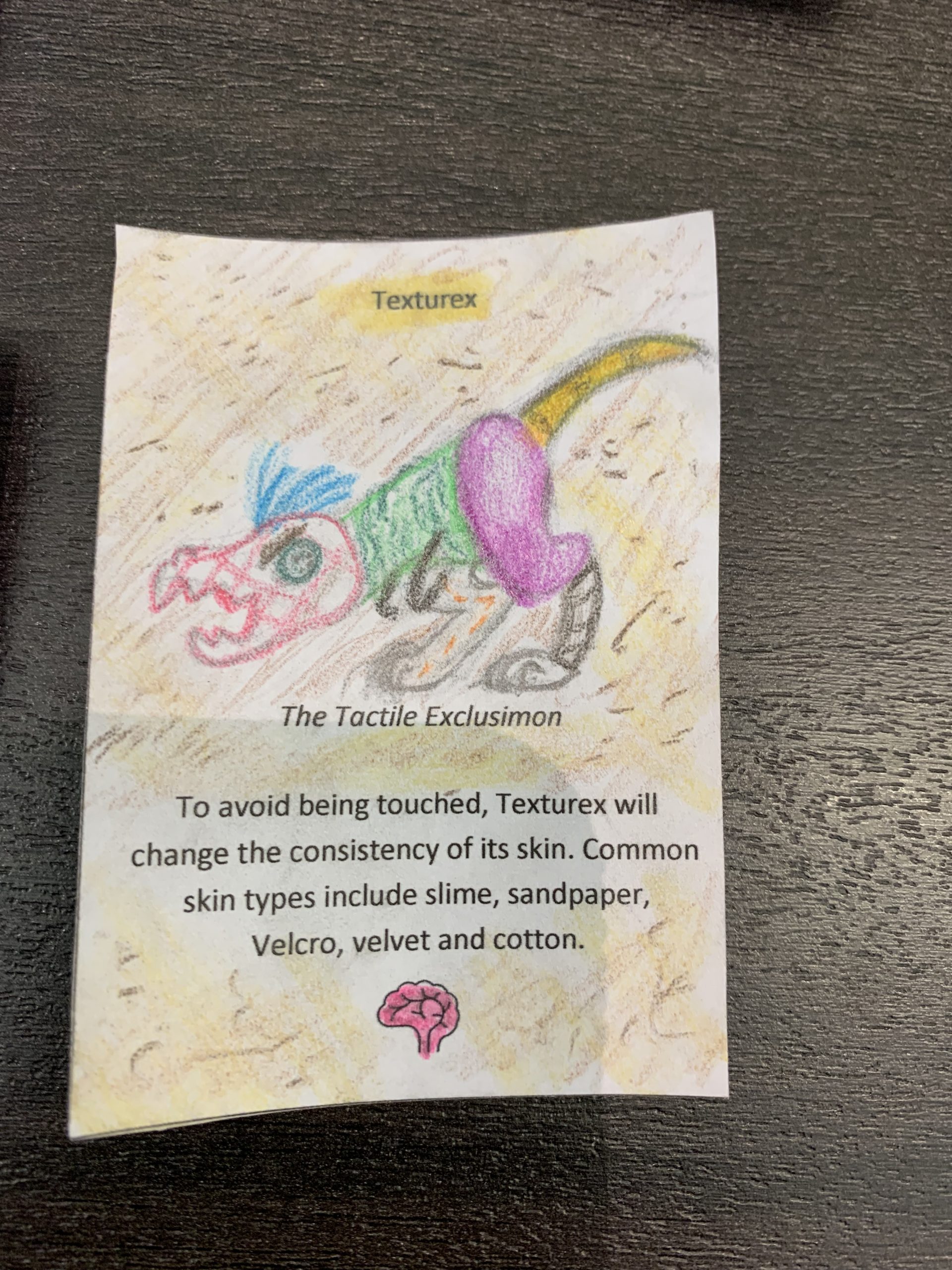The pieces below were submitted as final projects for Dr. Marcel O’Gorman’s ENGL701 Critical Design Methods Fall 2020 and Fall 2021 classes. Despite the challenges imposed by the COVID-19 pandemic, students used a variety of media and materials to engage with the question “What is critical design?” The range of projects, some of which are presented here with their designers’ statements, drew from critical theory and a variety of research-creation practices such as speculative design, critical making, discursive design, and applied media theory to critically engage with the socio-cultural implications of technology. The results, some speculative, others provocative, offer critical and sometimes playful interventions into contemporary technoculture.
DePendant, Giuseppe Femia
This product was created by the Metaverse in the year 2054 and has been mandated by the government as a form of mental health maintenance. The advertisements for it read as such, “When all the workplace anxiety builds up and you can’t take the burnout any longer, simply vent all your frustrations into DePendant, and it will do the rest. Using state of the art microwave technology, the pendant will instantly alleviate your stress and turn your worries in its own mass, growing in size. Has your partner been having an affair? Is your child choosing the wrong career path? Does your neighbour leave his lawn trimmings all over your driveway? Well, now you don’t have to worry about losing sleep over these minor inconveniences with the power of DePendant.”
Upon turning twelve, each individual is mandated to keep their DePendant on them at all times, in the form of a pendant, to cope with the stress of the world. Employees are expected to use these devices on their own time to keep up with workplace demands. The Metaverse in turn uses DePendant to collect information on their customers to further increase the accuracy of their algorithms. The information gathered is used much to the same effect as algorithms when they are given data on search history and social media engagement. That is to say, the data is put towards targeted advertisements for the user.
Designer: Giuseppe Femia, PhD Student, English Language and Literature
Exclusimon, Jelena Vulic
Exclusimon is a small deck of cards I created to help designers consider the able-bodied biases they may have unconsciously integrated into their products, thus making them exclusionary of the disabled community. Similarly to the Tarot of Tech, it is meant to be used in a meeting setting, where designers should read – or in some cases, struggle to read – the cards carefully and ask themselves if their products share characteristics with any of the cards, and what they should do to change that.
Each card is designed to embody an accessibility issue that are common barriers for the visually impaired, the neurodivergent, and/or people with motor disabilities. For example, Condorluted (The Purple Prose Exclusimon) is a card meant to represent how complicated language can cause confusion for some members of the neurodivergent community, and achieves this by using overtly convoluted words, such as “labyrinthine” and “versifiers”. As well, some cards contain common blunders made by designers who have attempted to be inclusive in their creation process, but for various reasons fall short.
In making Exclusimon however, I have to recognize that even my own biases are evident in its design – I am visually impaired myself, and am more knowledgeable on the barriers felt by that group, hence why Exclusimon has more cards focused on them in comparison to neurodivergent and/or motor disability barriers. As well, I have to stress that it is not my intention that this deck would theoretically replace consulting a disabled demographic when designing a product. Rather, it should persuade designers to be conscientious about accessibility and expand their own toolkits to help combat exclusionary design.
Designer: Jelena Vulic, MA student, Experimental Digital Media
SOS – The Resistor Case, Lisa Brackenridge



SOS – The resistor case is an interpretation of the resistor case workshop from Marcel O’Gorman’s book Making Media Theory. Using a resistor case kit, with some adjustments and additions, my interpretation of this critical design artifact is a thought experiment about digital abstinence and making media theory. Somewhere between passive usage reports on our digital devices and more stringent lock boxes and cases (like the K-Safe orYondr pouch), the SOS uses sounds and images to encourage thought about the conversations and human interactions we may be missing, or at least limiting, when using our digital devices.
Designer: Lisa Brackenridge, MA student, Experimental Digital Media (XDM)
Knotsomuch, Carolyn Eckert




Inspired by digital ritual and devotion, PhD student Carolyn Eckert’s KnotSoMuch is an object-to-think-with that examines our digital device devotion, in reference to mindfulness and the idea of wasted time. When she discovered that over a six-day period of time she had spent twenty-five hours scrolling aimlessly through social media, texts and emails on a mobile phone, she knew that something had to change.
The Macrame KnotSoMuch project is a visual representation and a reminder that time and attention are precious and not simply for the commoditization of our digital distractions. KnotSoMuch offers alternatives, such as prayer beads, the Rosary and an iPod with recorded music, meditations and prayers with the intention to digitally disconnect in order to connect with the self. For Jenny Odell this is a form of creative “nothing” that acts as a “political resistance to the attention economy” that allows time for solitude, observation and enjoyment of life as it unfolds, but without the capitalist commoditization (Odell 12).
A visual representation of alternatives to digital device devotion that offers creative mindfulness and rejuvenation of the self. This piece also highlights craft-making as an alternative to technological productivity and as a way to manage or find balance from the distractions of our devices.
Designer: Carolyn Eckert, PhD Student, English Language and Literature
Exercises in Critical Making, Heather Eustace


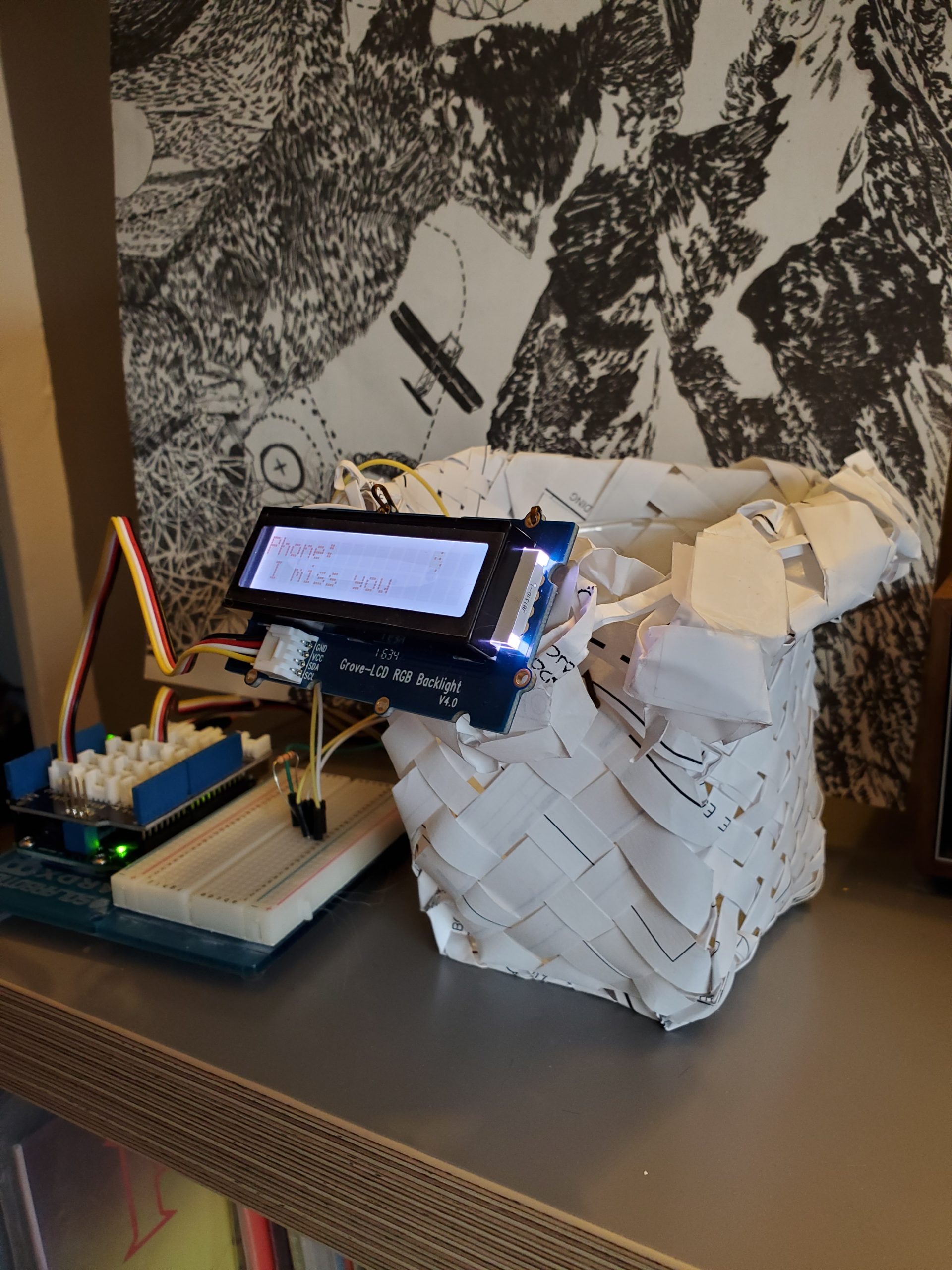

Exercises in Critical Making: The following projects are taken from Making Media Theory, by Marcel O’Gorman. They are exercises in Critical Making a DIY approach to Critical Design. These projects use the assemblage of small circuits, coding and other more historical practises of making to bring up issues around technology. These projects are critically informed, active and often interactive objects meant to provoke thought. The tactile nature of the work involved in producing these projects engages the mind with the bodily experience of the materials and opens different channels for exploration through problem solving. This type of work involves a great amount of focused attention. To sustain attention cell phone notifications were silenced when making. The final product is not meant to stand alone to communicate the ideas uncovered through the building process, rather it is the process itself that is valuable.
- Smartphone Basket/ Codependent Relationship: This project involves the meditative historical process of weaving a basket. This is juxtaposed with the act of programing a digital screen that attached to the basket. The contrasting types of labour involved in making this project led to contemplation on technology and its effects on body and mind. When a cell phone is placed in the basket the screen quips needy messages to the phone’s owner highlighting a codependent relationship.
- Conductive Dough/ Monstrous Hands: This project uses the insulating quality of salty playdough and the resistive quality of sweet playdough to complete a circuit illuminating 2 LED lights. The dough was sculpted into hands initially to evoke making with the hands. The crudeness of the sculpted hands at once brought to mind Dr. Frankenstein’s monster an idea that was accentuated by the electrical current running through them. The connection to Frankenstein raises many issues associated with creating in one’s image: whose image? – For one, and also the short comings of human centric thinking, especially in regards to our current climate crisis.
- The Useless Box: This project involved assembling an electronic kit of a box whose sole purpose is to turn itself off. This clever comment on technological abstinence is both humorous and poignant. The drawings on the outside of the box boost its punch line with warning labels calling on the myth of Pandora’s Box. It highlights human curiosity and temptation as well as the notion of the taboo.
- The Anxiety of Resisting: The purpose of this project is to create a case for your cell phone that makes it difficult to access. During the process of constructing this case the cell phone was measured to be sure it would fit neatly inside. Handling the phone during construction highlights the impulse to respond to incoming notifications. This condition led to a breach in technological abstinence due to worry and anxiety over missing something important. This breach is ironic in the context of the project and illustrates the challenges of unplugging.
Prometheus, Aleksander Franiczek
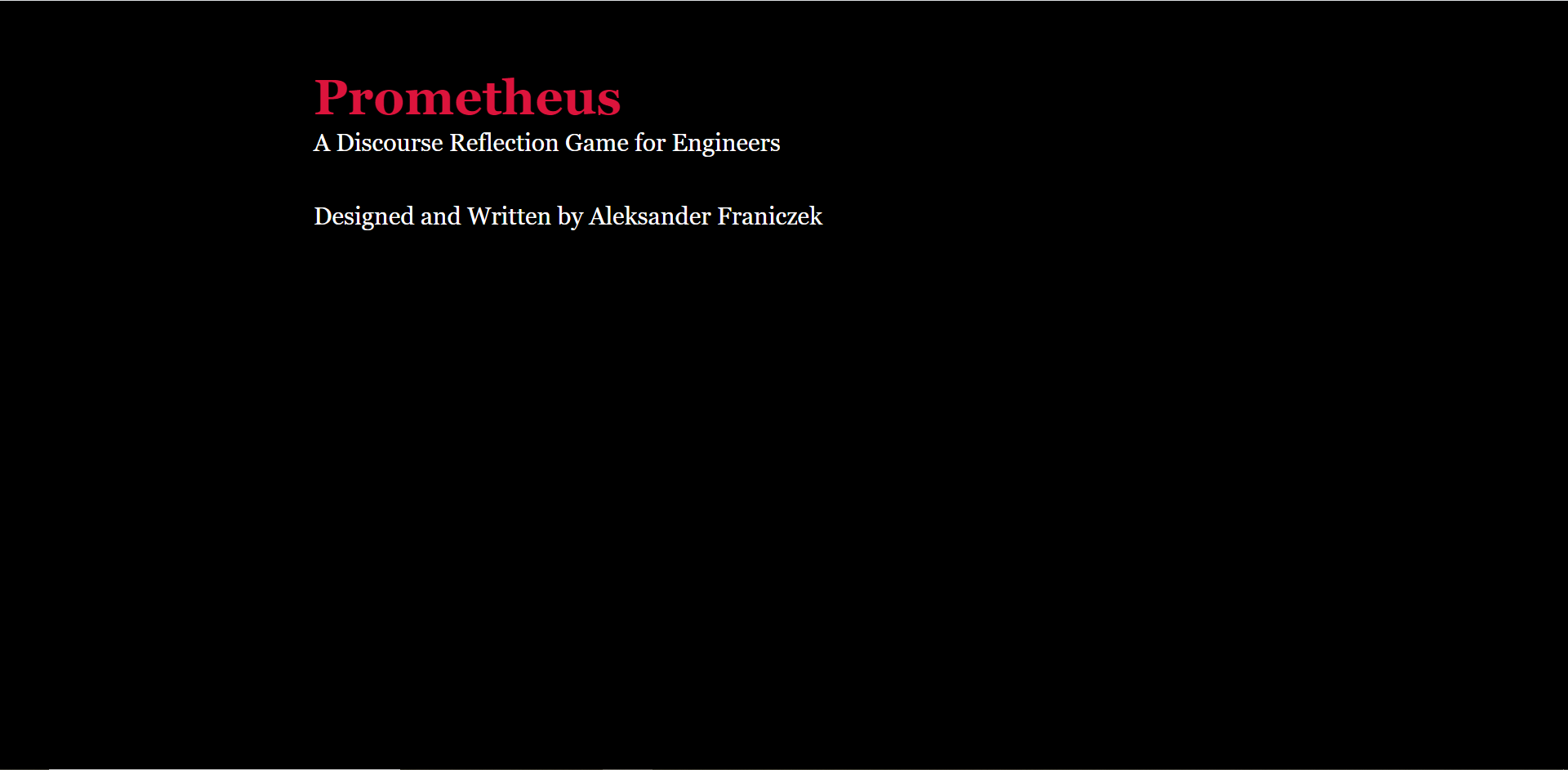

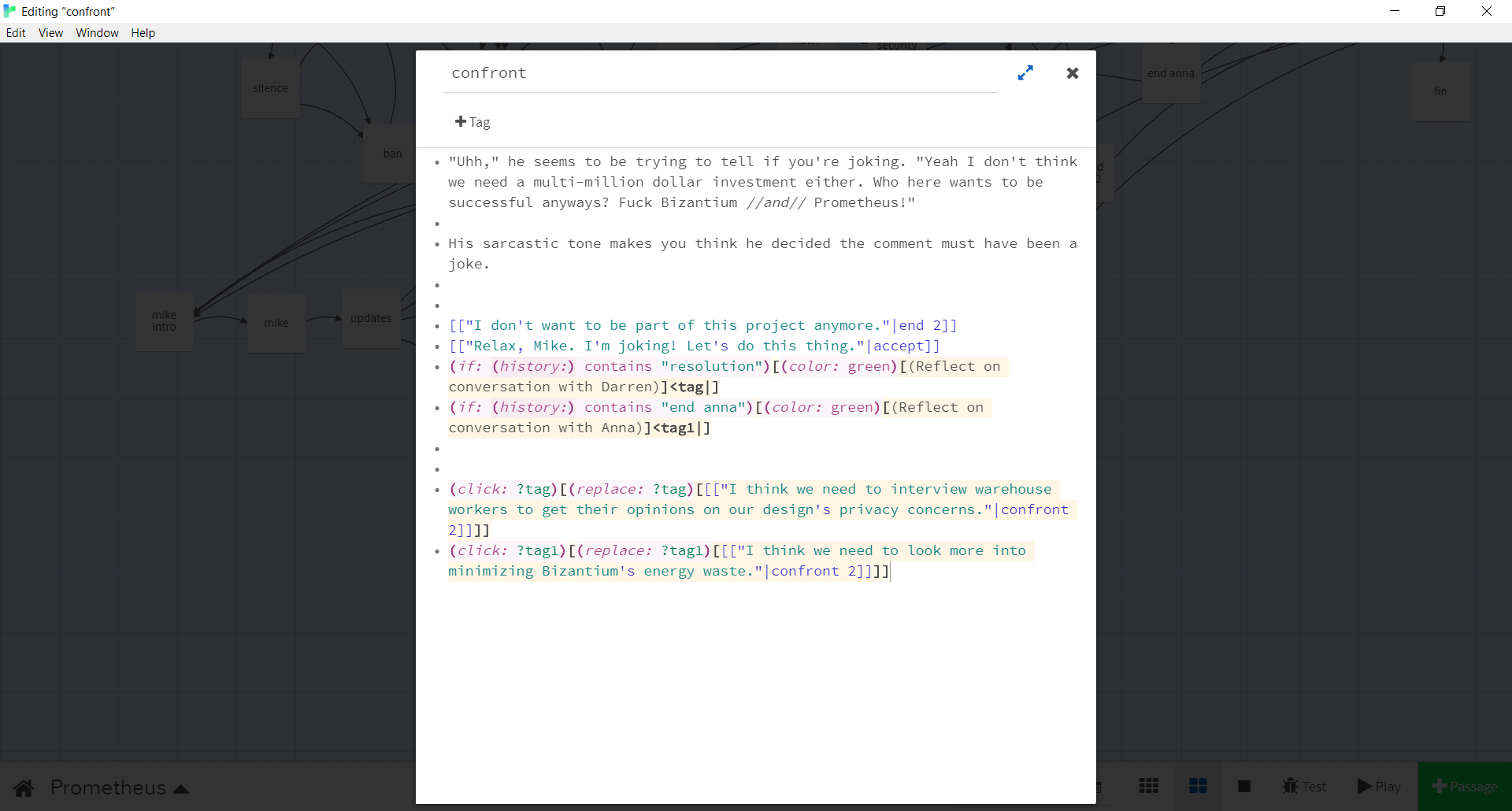
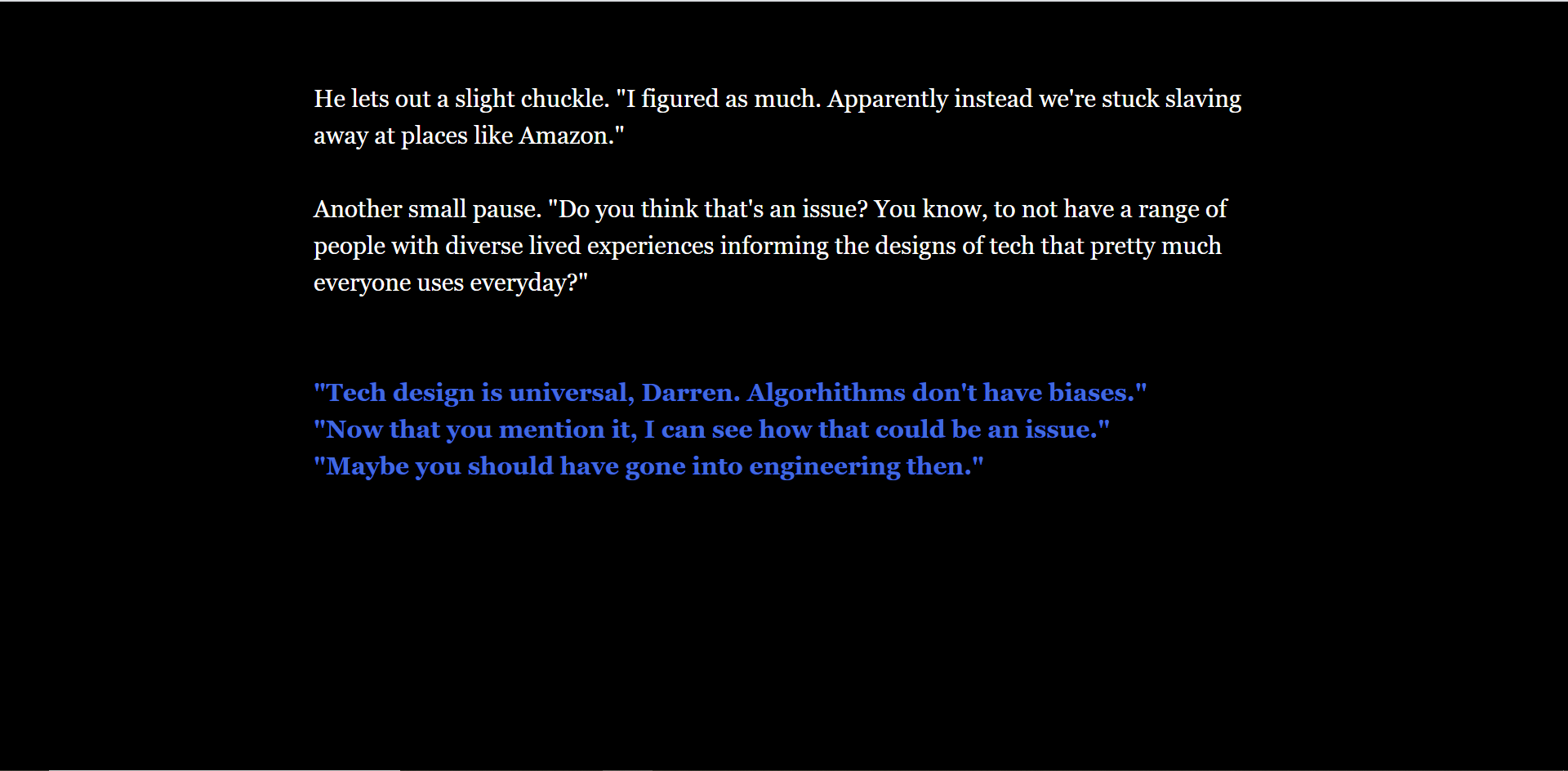
Prometheus is a “Discourse Reflection Game” designed to encourage engineers to reflect on the potential social and ethical consequences of tech designs. It’s a narratively-driven, text-based game with gameplay that requires players to make discursively engaged dialogue choices with three different characters from a diverse set of backgrounds. By immersing players in the role of a fictional engineer, the game is intended to function as a reflective tool that demands an engagement with design that is less concerned about commercial value and optimization and more focused on recognizing how tech designs shape human experience.
With Prometheus, I didn’t want to make a game that is overtly didactic. At the same time that it is supposed to prompt critical reflection, it is also supposed to be enjoyable to converse with the characters. The player can express themselves in a variety of ways which will have different impacts on the conversations, and each of these outcomes provides alternative perspectives on the discursive implications of tech design and the characters’ perspectives on the practice.
Designer: Aleksander Franiczek, English Language and Literature PhD Student
EarthBand, Christopher Rogers



This was a “Black Mirror” style critical design project that attempted to highlight how disconnected we are to the world around us. In this fictional scenario, EarthBand is a wearable device developed in collaboration between a big tech company (FriendlyTech) and an environmentalist working at a national park. EarthBand’s main goal is to help users connect with ‘nonhumans’ by heightening our natural senses and dulling our phone notifications.
The wearable device has a number of components that let users experience their connections to nature differently. The hope is to help people become more aware of their entanglements with the world around them, and to cultivate a better sense of shared responsibility for the planet (especially in the face of climate change). This all seems well and good, but things don’t go according to plan. During the launch event, national parks and precious natural habitats are destroyed by the very people supposedly interested in EarthBand’s benefits.
This speculative scenario is presented through the environmentalist’s personal blog, including videos, protype sketches, and fictional news clippings: A Blog in the Park.
Earthband video sample: https://youtu.be/qb9gCeM8mxU
Designer: Christopher Rogers, MA Student, MA student, Experimental Digital Media (XDM)

